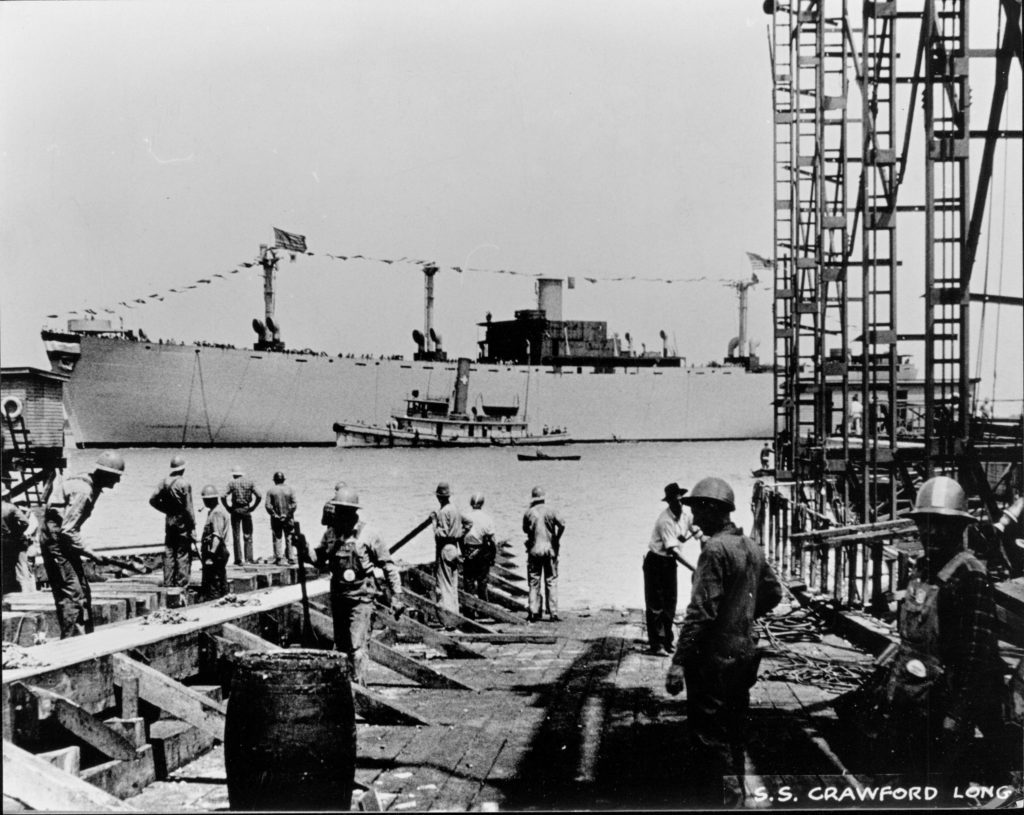This week GHS is commemorating the 75th anniversary of the Allied invasion of France on June 6, 1944, known as D-Day or Operation Overlord. Using materials from the GHS Research Center and historical markers, GHS will explore Georgia’s involvement in World War II. To learn more, read the post below.
In 1941, the United States Maritime Commission ordered the construction of a cargo ship fleet that could be built quickly and cheaply. Though originally set to be sold to the British navy, the United States quickly adopted the ships as part of its naval fleet after the attack on Pearl Harbor. At first, these ships were referred to as “ugly ducklings” due to their simple, gray design. During the launch of the S.S. Patrick Henry, President Franklin Roosevelt declared that these ships would bring liberty to Europe; thereafter the fleet became known as Liberty Ships.
When construction began, it took up to 245 days to complete one ship. As the war progressed, construction shortened to 24 to 50 days. Over 200 Liberty Ships were lost during the war, though many provided much-needed supplies to the troops in Europe and the Pacific. One of the last remaining ships in operation is the S.S. John Brown in Baltimore, Maryland, where it serves as a history museum.

